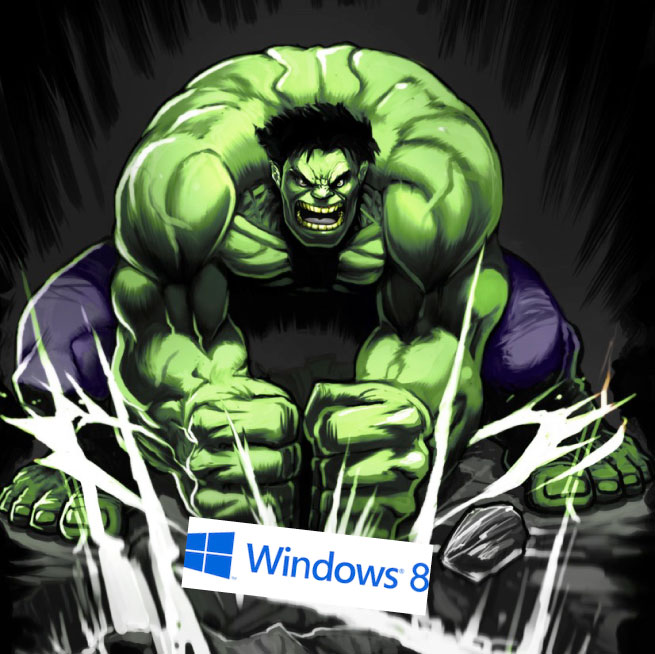Over the last several weeks, reviewers, analysts and reporters seem to have forgotten the very raison d’être for being in the technology industry in the first place – “to go boldly where no man has gone before.” This is especially true when it comes to Windows 8’s user interface.
Certainly, the Windows 8 UI is a very distinctive departure from the previous versions. However, Microsoft was very clear about why it undertook such an initiative. The company wanted to bring the world of mobile, touch and traditional clients closer together. And this new “modern UI,” as I understand is the proper nomenclature for the new interface, achieves Microsoft’s goal very well.
First of all, Windows 8 finally legitimizes the poor Windows key that has sat mostly in the proverbial wilderness of the 104 keys on a keyboard for over 17 years. It operates much in the same aspect as the Windows key on a Windows 8 Phone, the home key on an Android-based phone or tablet, and the home key on an iPhone or iPad. This is smart!
While I must admit that the left-to-right scrolling of the Start screen takes a little getting used to, it’s not exactly taxing my cerebral capabilities. That said, the outcry from critics over the loss of the Start button is a mere distraction. Essentially, the Start screen is the first true progression in the Windows user interface since 1985, when the original Microsoft Windows was first introduced.
And if the absent Start button is the only thing critics can gripe about, then frankly, Microsoft has done a magnificent job. For those die-hard needy users who won’t use their computers without a Start button, there are solutions. Microsoft has generously promoted a cottage industry and micro economy for Start button replacement applications to be developed.
I encourage everyone to try the new interface for a couple of days, and then go back to Windows 7 or XP (or Vista – ugh!) for a couple of days before writing off Windows 8 — which is what I did. And although I have been accused (and probably rightly so) of being a power user, the way I utilize my computer is not much different than most other people. My primary applications are the Microsoft Office applications (namely Word and Excel), web browsers, email clients, instant messaging clients, and Evernote.
For me, Windows 8 has a very careful balance between those of us who prefer the use of a keyboard rather than a mouse, as well as those who are progressing toward using tablets and touchscreens more often. I found the upgrade from Windows 7 to Windows 8 completely seamless. Some of the personalization applications that I have installed to make my life easier have no issues running in Windows 8. All my peripherals such as webcams, printers, etc. all work without modification or fuss.
Do I question some of the UI decisions Microsoft made? Yes! However, it is a case of getting used to the new interface. I like the Windows Store concept Windows 8 employs, which aligns very closely to the way I use my tablet and smartphone.
In fact, as a result of Windows 8, I have been able to uninstall several applications because the functions are now native to Windows 8. These included my full disk encryption application as Windows 8 Pro comes with BitLocker — a program that I encourage everyone to use.
I have barely scratched the surface of Windows 8, and there are many more things to get used to. But this is absolutely no different than getting a new laptop and adjusting to the new configuration of the Home/End, PgUp/PgDn, Insert/Delete keys. It is no different to adjusting between a touchpad, a pencil eraser top-style mouse on a laptop, or a new shape of a mouse.
Once more, to all the reviewers, analysts, and reporters out there, this is a call to action for you to help users evolve and progress. I want to understand how to take advantage of Windows 8, not read multiple pages of rhetoric of why Microsoft ruined your life because you can’t find the Windows button on keyboard.
Hulk artwork via el-grimlock/deviantart
 Benjamin Woo is the founder and Managing Director of Neuralytix, Inc. He frequently speaks at industry and customer events worldwide and is often quoted by leading business and technology press. Prior to founding Neuralytix, he was the Program Vice President of IDC’s Worldwide Storage Systems Research, where he led a team of analysts responsible for advising clients on the evolution and trends related to data storage system.
Benjamin Woo is the founder and Managing Director of Neuralytix, Inc. He frequently speaks at industry and customer events worldwide and is often quoted by leading business and technology press. Prior to founding Neuralytix, he was the Program Vice President of IDC’s Worldwide Storage Systems Research, where he led a team of analysts responsible for advising clients on the evolution and trends related to data storage system.
VentureBeat's mission is to be a digital town square for technical decision-makers to gain knowledge about transformative enterprise technology and transact. Learn More

